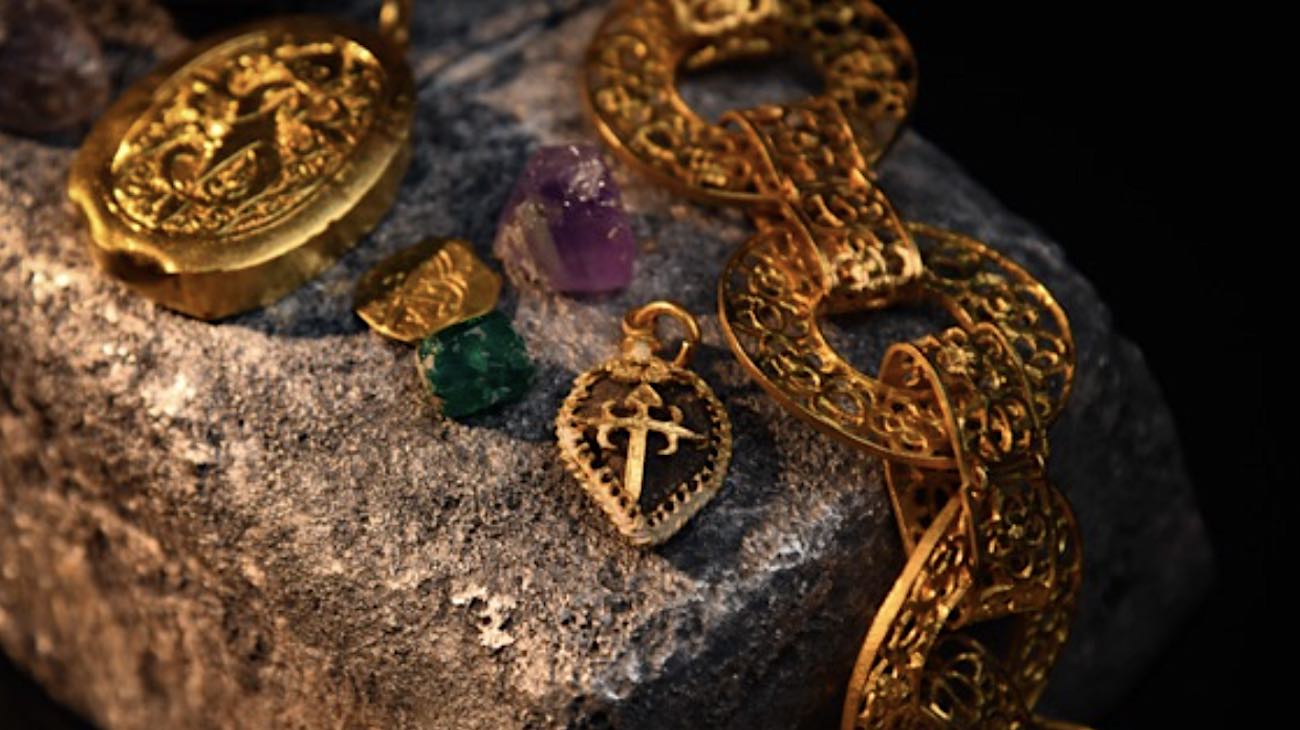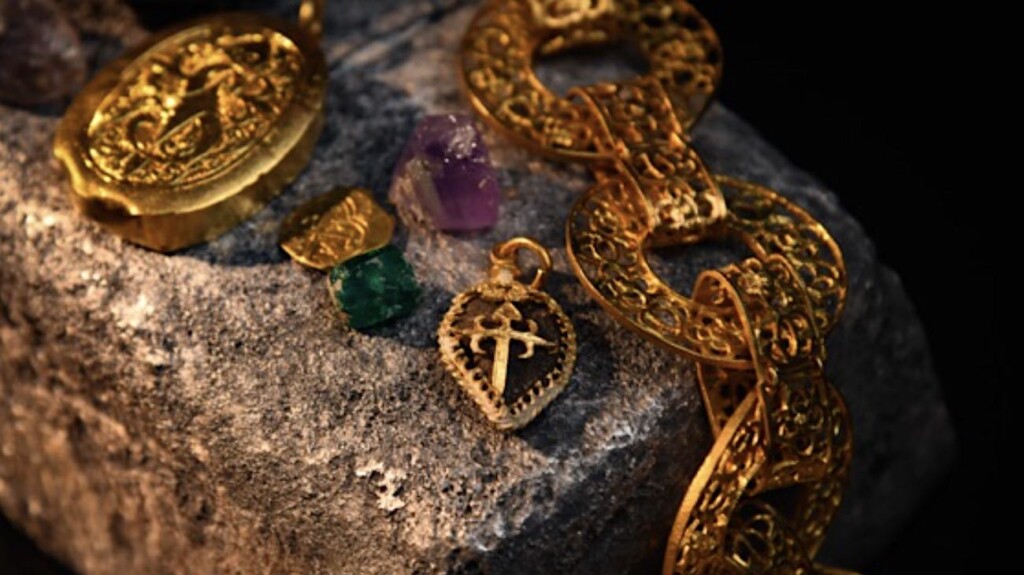
The Spanish galleon Maravillas was one of the richest treasure ships ever lost at sea when it sank in the northern Bahamas over three centuries ago. Since then it has been salvaged into oblivion—at least that’s what experts thought.
Now, after four years of underwater archaeology, Allen Exploration has mapped a sprawling trail of scattered treasure running for over 5 kilometers.
Late at night on January 4, 1656, the Nuestra Señora de las Maravillas (Our Lady of Wonders) sank off the western Little Bahama Bank loaded with treasure. The Spanish ship was heading home, groaning under the weight of silver bars and coins. Also onboard was the treasure salvaged from an earlier galleon lost near Ecuador two years earlier.
Soon after, the galleon was ‘fished’ for relics on at least 21 occasions, heavily stripped by Spanish salvors and then English and American crews. Then, between 1972 and 1991, modern salvage teams re-discovered the wreck and lifted an alleged 30 tons of gold bars and coins, silver nuggets, jewelry, emeralds, iron anchors, and cannons.
“Many experts believe the story of the Maravillas is over, that past salvage picked the old ship dry,” says Carl Allen, the founder of AllenX. “Now we’ve proven the wreck is not all vanished.”
Since 2019, licensed by the Bahamian government, AllenX has discovered the survival of a sprawling scatter of artifacts running southeast for a distance of over three miles from where the Maravillas originally hit a reef and sank.
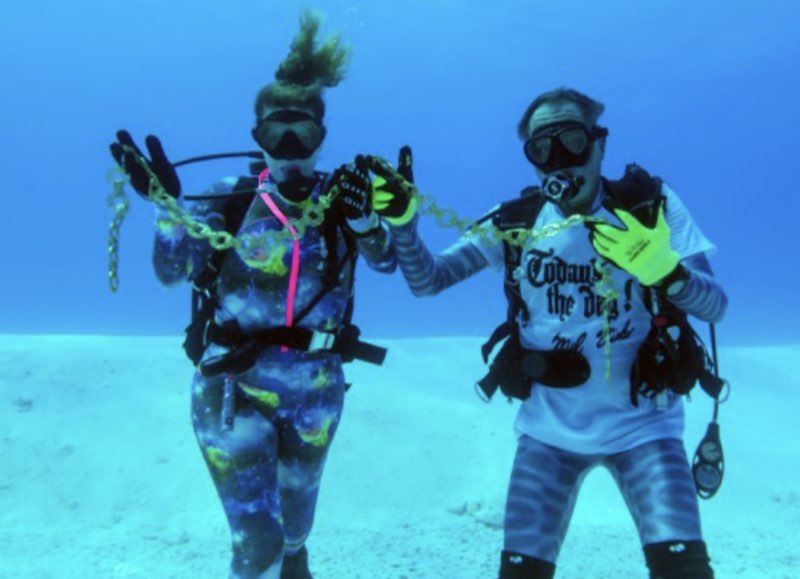
Hidden beneath waves and sand are olive jars, silver pieces of eight, silver bars, emeralds, amethysts and gold jewelry. Every single find uncovered, from 828 lead musket balls and 10,988 olive jars fragments to almost 3,000 silver coins and 125 emeralds and amethysts, has been painstakingly mapped.
“You might think that it was centuries of hurricanes and storms that broke up the Maravillas. But the archaeology has forced us to re-think that theory,” says Dan Porter, the project’s offshore manager who oversaw the mapping.
At least 142 hurricanes and storms have struck The Bahamas since 1500. “If the galleon was broken up by hurricane after hurricane, the remains would be scattered around all four points of the compass. That’s not the reality. They’re mostly focused in one artifact scatter trail running southeast,” says Porter.
Jim Sinclair, the project’s chief archaeologist, was surprised that the finds blown down the scatter trail included unique gold chains and jewels inlaid with precious gems, the personal property of wealthy passengers and officers.
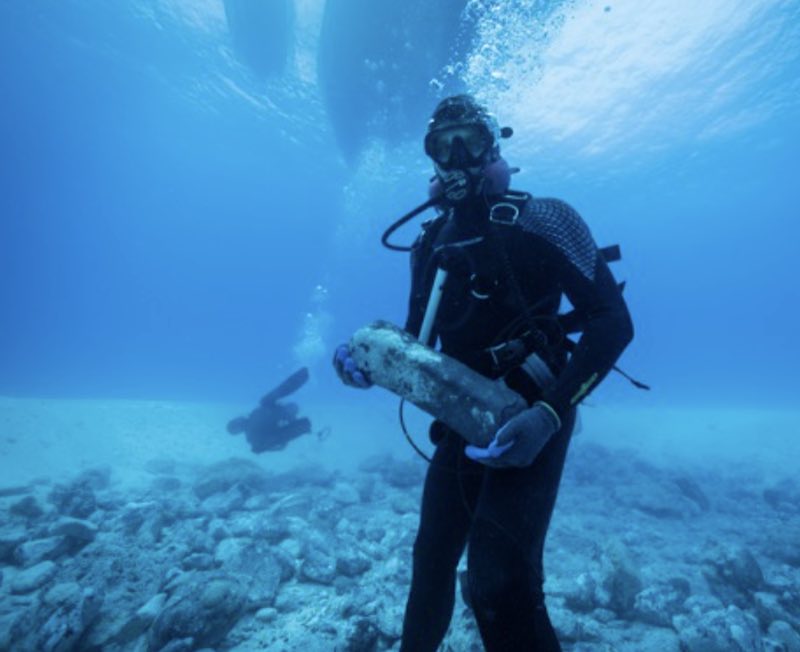
“You can be sure that if these valuable items were still sitting on the main wreck when the Maravillas was salvaged in 1656, they’d have been brought up too,” says Sinclair. “This can only mean that the treasures found by AllenX were scattered during the five months before the Spanish salvage operations began in June 1656.”
TREASURE CLOSER TO HOME: Man Finds Surprise of a Lifetime in His Field: 700 Coins from Civil War ‘The Great Kentucky Hoard’
The western Little Bahama Bank lies within the Trade-wind Belt. In the winter, winds with an average velocity of 30-40 miles per hour (‘northers’) blow in from the northwest and northeast. AllenX believes that two to three storm fronts like these created the main part of the Maravillas’ scatter trail between January and June 1656.
The most common class of finds lost down the Maravillas scatter trail come from the sterncastle, where the passengers and crew’s belongings were kept—from the fancy Chinese and Mexican bowls and dishes for dining to swords, navigational dividers, and gold jewelry.
HEART OF GOLD: Teen Finds a Safe Containing Thousands on Bottom of River – Tracks Down Owner Who’d Been Robbed 22 Years ago
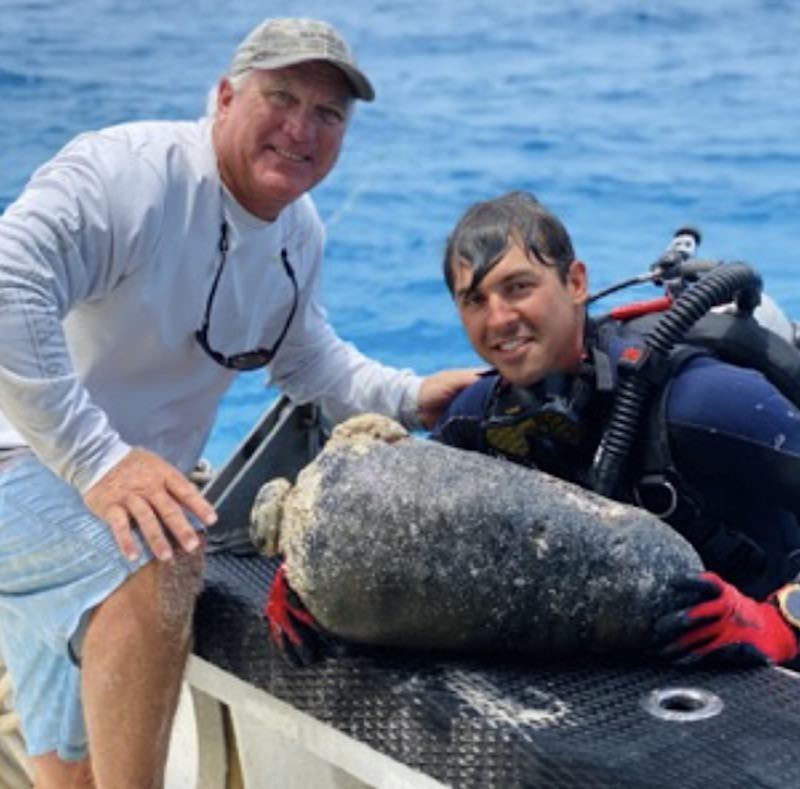
Carl Allen explained that historical accounts showed that the three stern cabins collapsed into the ocean. “The quarterdeck and sterncastle floated away, never to be seen again.”
“Throw into the mix rampant smuggling: the Maravillas was carrying at least 100% contraband above the value of the cargo – and so much of the archaeology of the Maravillas is still to be explored and its history written.”
The team published their research into the Maravillas scatter trail in Ocean Dispatches 4, for the Bahamas Maritime Museum in Freeport, which Allen founded in 2022 to display the treasure.
LOOK: Family Finds 300-yo Golden Treasure in Shallow Florida Waters
In 1992, the Government of The Bahamas enacted a moratorium on the issuance of licenses for shipwreck salvage, and the seas stayed closed until 2019, when Carl Allen was awarded a new license to conduct scientific and archaeological exploration. AllenX now submits monthly written reports to the country, presenting maps of finds, lists of discoveries, and research.
Watch a video below from their YouTube channel.
SPARK A PASSION For Shipwrecks By Sharing This on Social Media w/ Friends…




















